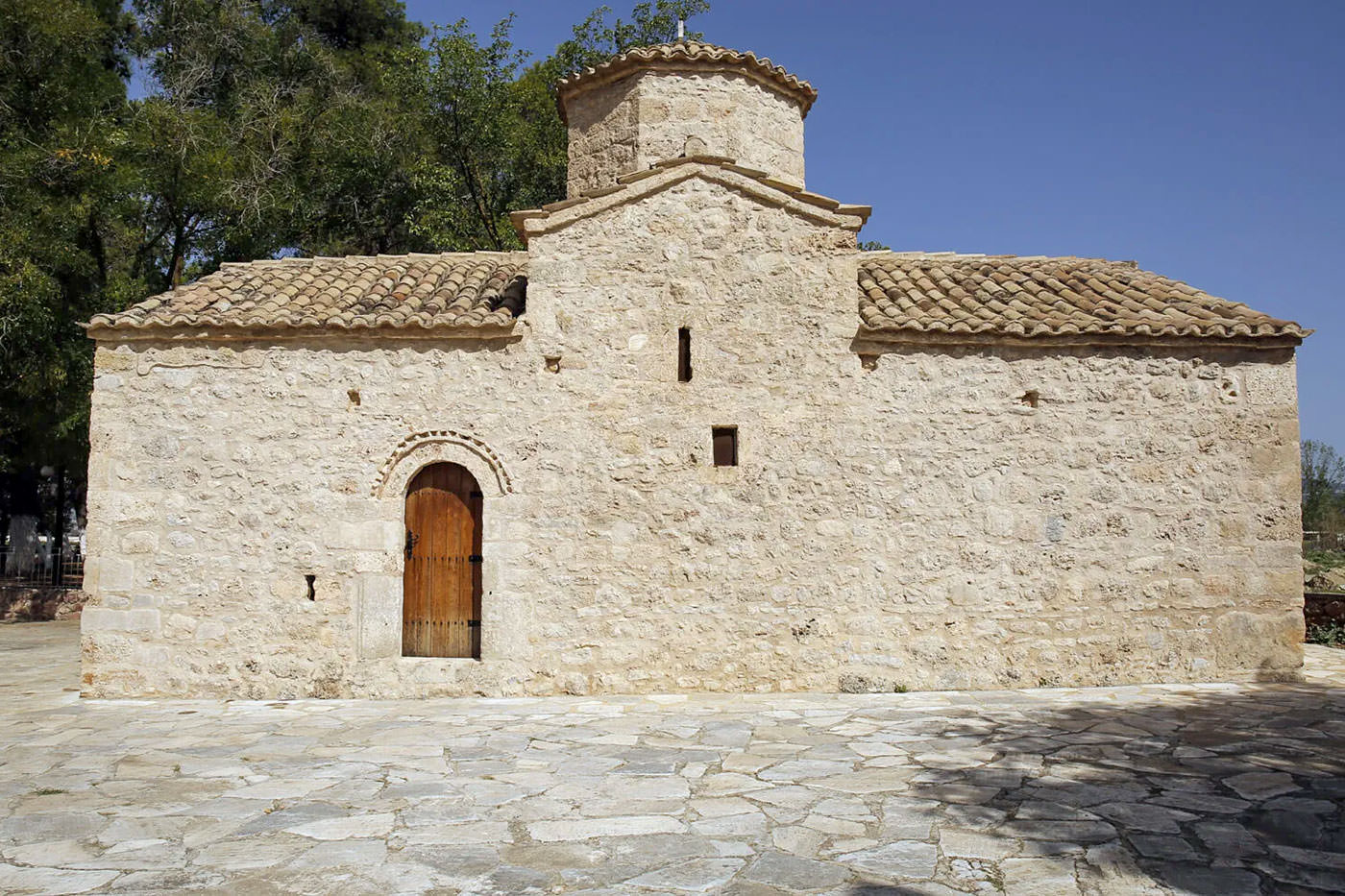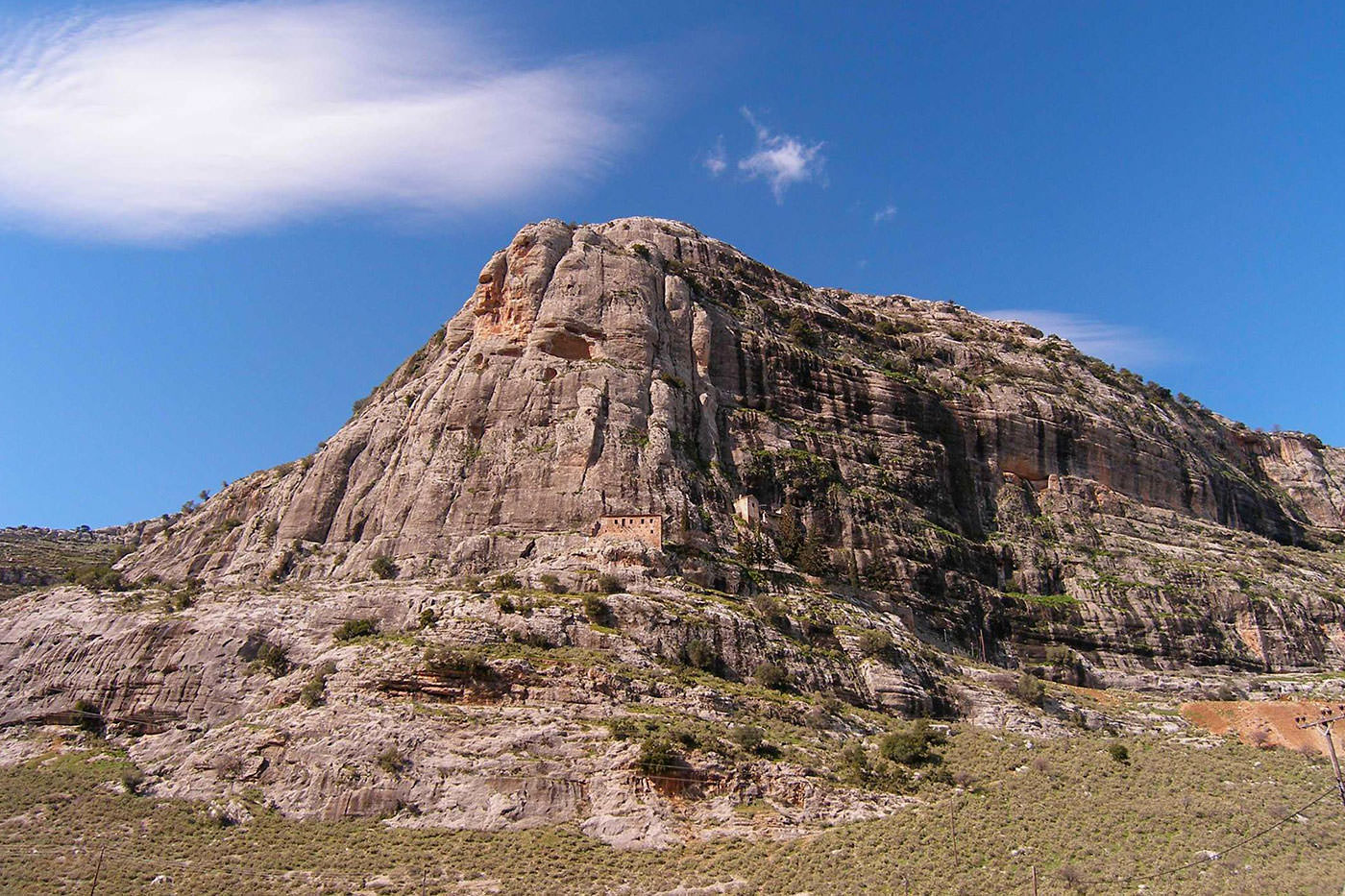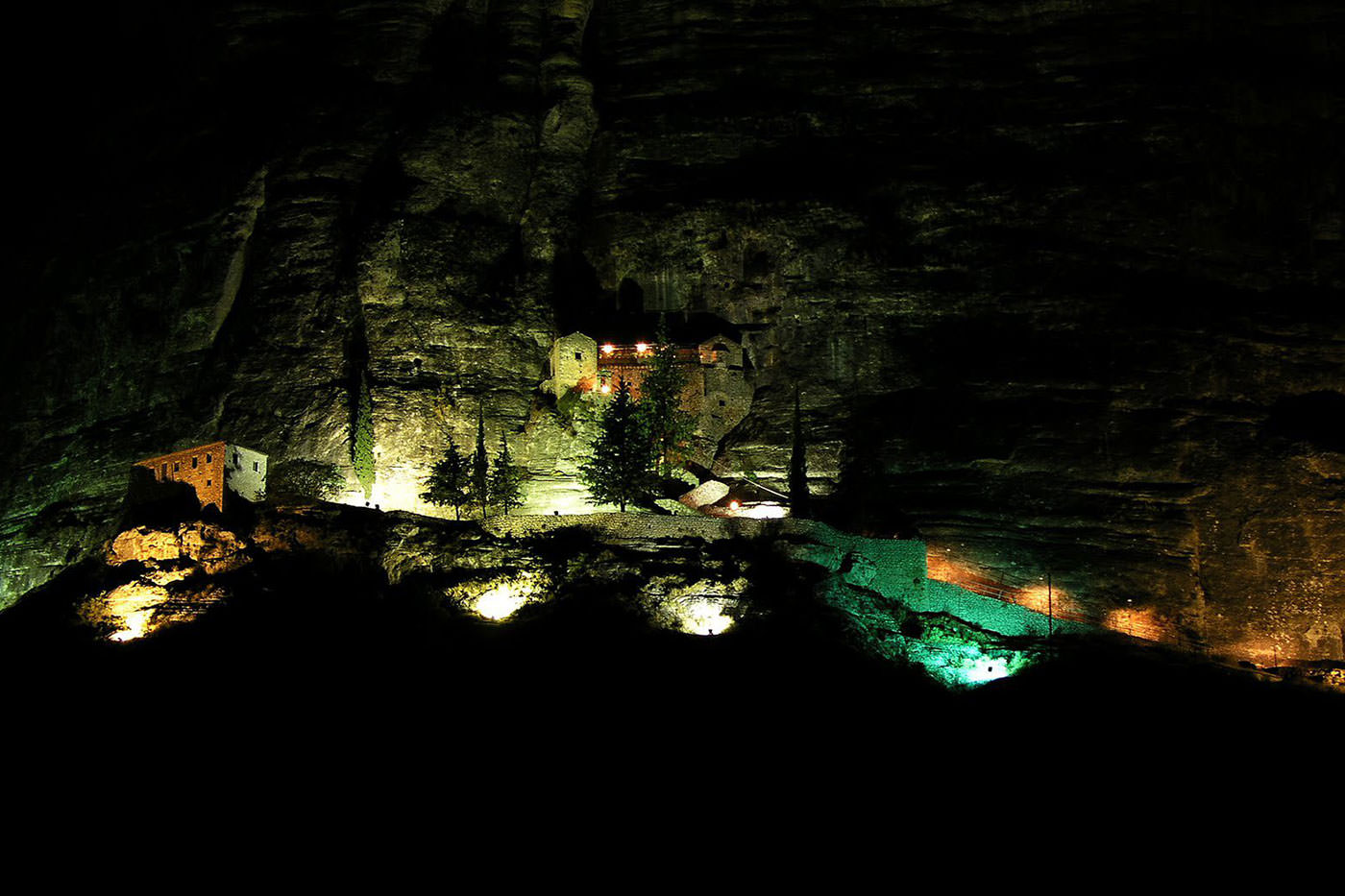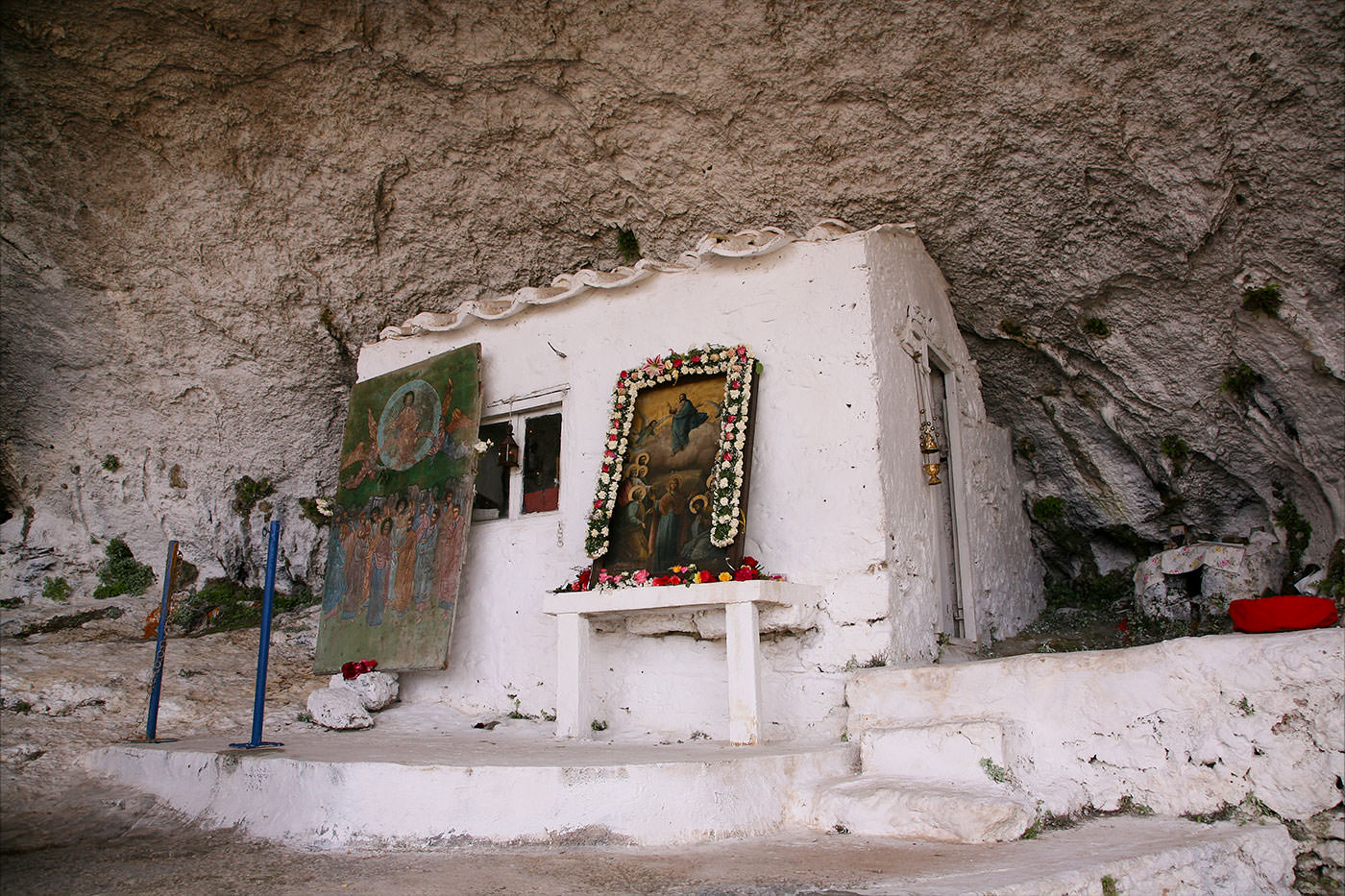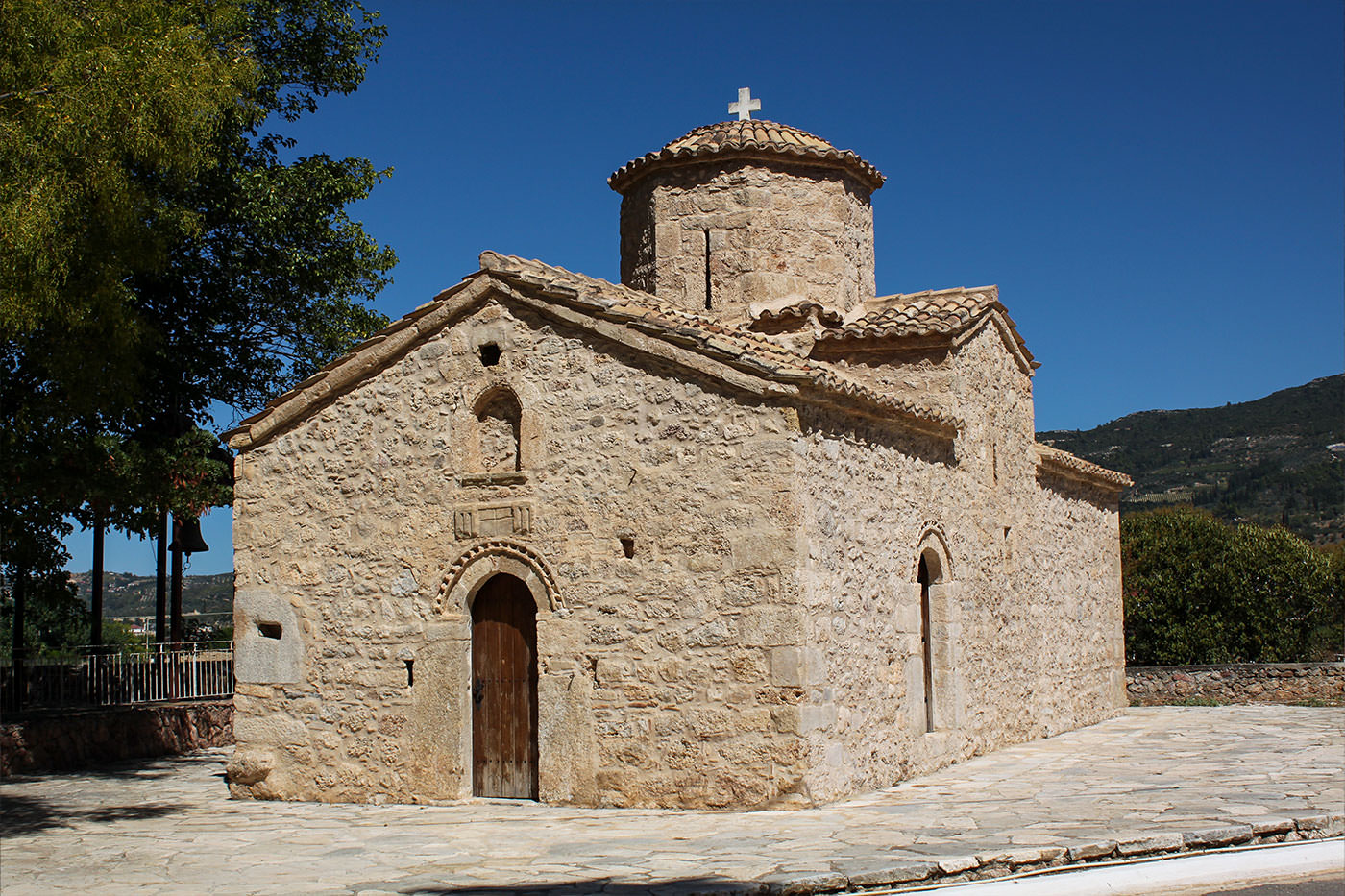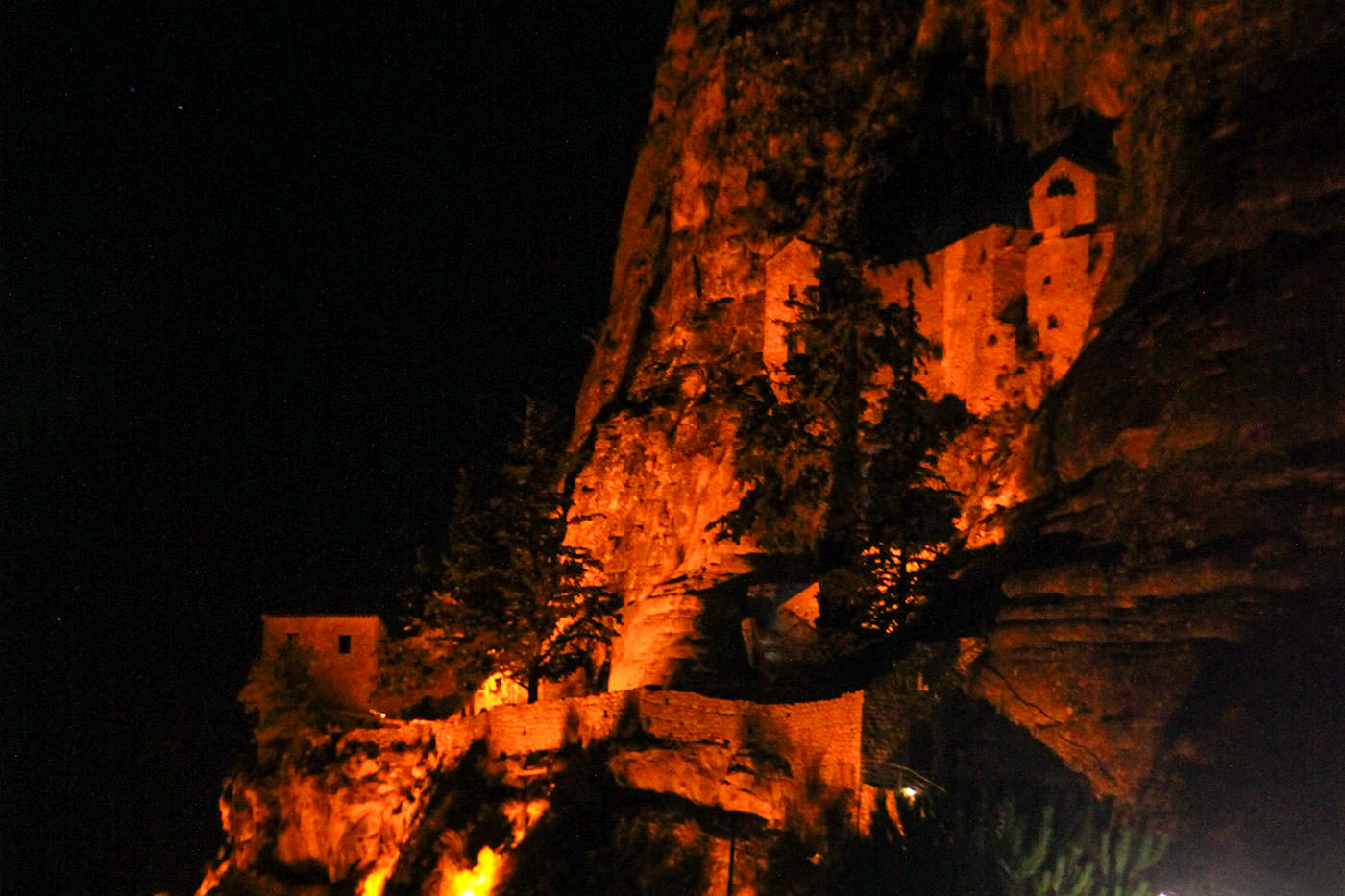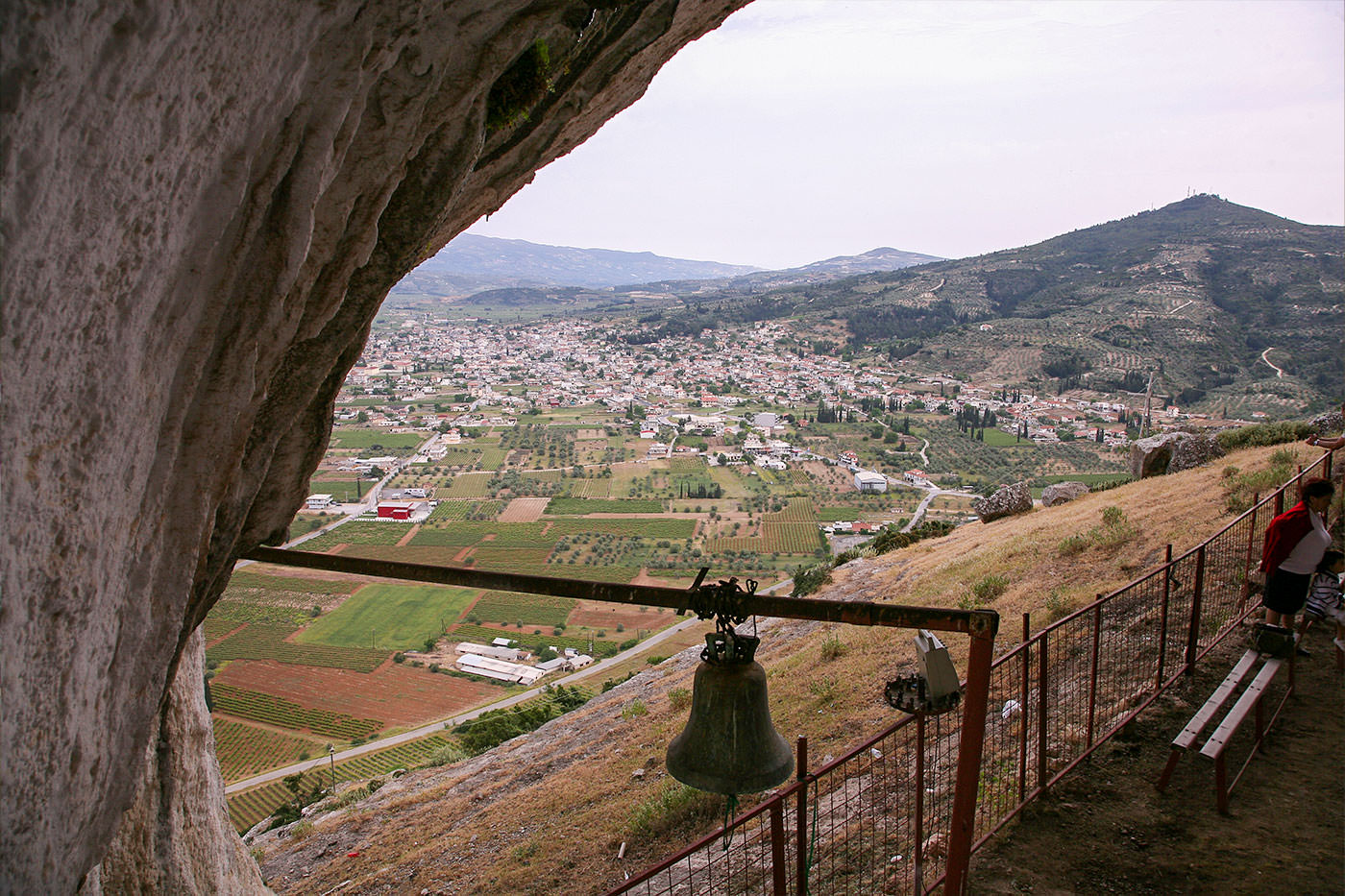AGIOS GEORGIOS
The name of our area for a long time after the establishment of the Greek State following the 1821 Struggle for Freedom, was Agios Georgios. To honor our patron saint, we gave his name to the mainly produced grape variety of our area, the PDO name Agiorgitiko, which is produced since 2000 BC and is an integral part of our cultural heritage.
The church of Agios Georgios is located west of the city, on the road leading to Leontion, Petri and Psari. It is a designated historical monument. The holy chapel of Agios Georgios, also called Kato Ai-Giorgis, was an old dependency of the Holy Monastery of Agios Georgios Feneos or Fonias.
The church is of Byzantine style and stone-built. Its length is 10.50 m, its width 5.50 m and its height 8.50 m. It has a polygonal dome and there is a cared for grove next to the church. Inside the church are kept loopholes, sign that indicates that, during the turbulent years of the Turkish occupation the church was a shelter for thieves. The floor of the church is made of stone, as is its iconostasis. We do not know exactly when it was built, but it is estimated that it was built in the 14th or 15th century. By decree of 1905, the church falls under the parish of the Presentation of the Blessed Virgin Mary.
THE VIRGIN OF THE ROCK
A very important religious monument is the Holy Monastery of the Dormition of the Virgin Mary or Panagia tou Vrachou (Παναγία του Βράχου = Virgin of the Rock). On the rocks of Polyphengos in a cave there are the remains of a Byzantine church. The monastery of Panagia tou Vrachou was built after the destruction of the small settlement at Mount Polyphengo and is wedged on the eastern and completely vertical side of the monolithic rock. The local oral tradition says that a small boy fell from the rock, but he was a later found safe and sound. The katholikon of the Monastery was built exactly where the little boy was found. We do not know exactly when it was built, as the writings that testified to it were burned by the Turkish-Albanians in 1770, and the only other source that the Monastery is refered to are some Venetian documents of 1663. Only the icons of the iconostasis, some sacred vessels and the bronze circular seal of the Monastery were saved from the fire. The seal depicts the Virgin Mary holding Jesus in her arms and holds the inscription "Monastery of Panagia Polyphenghi of the Rock 1633". The monastery is also mentioned in some old Venetian documents of 1698. Panagia tou Vrachou experienced great glories from the beginning of the 19th century until the time of Kapodistrias, the first governor of Greece, while during the Revolution it offered important services to the Struggle.
The monastery is only one kilometer away from the center of the town Nemea. The stone-built, arched entrance leads to a series of stairs that lead you to the temple literally built into the rock.
